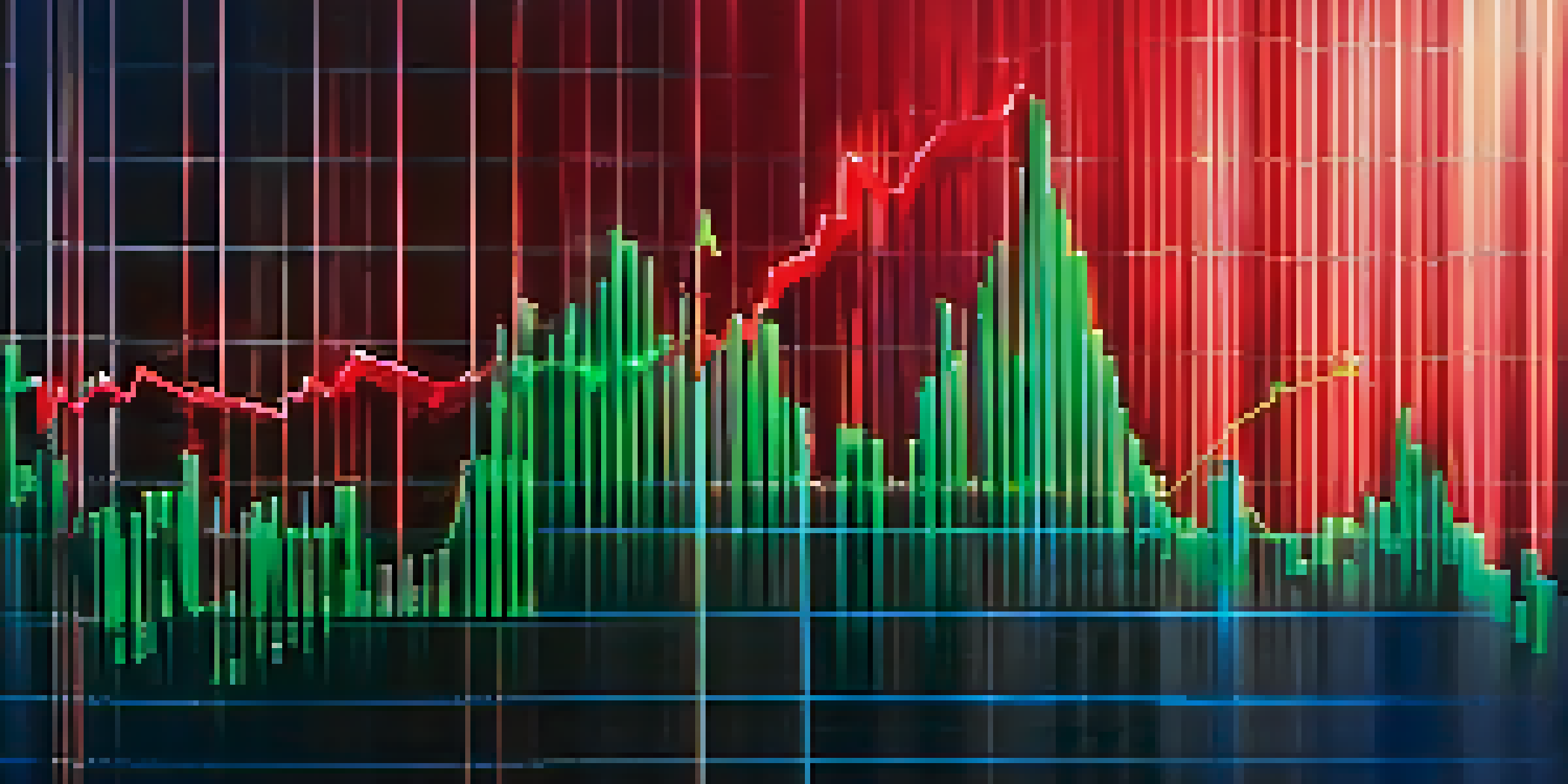Understanding Dividend Yield: A Key Investment Metric

What is Dividend Yield and Why It Matters
Dividend yield is a financial metric that shows how much a company pays out in dividends each year relative to its stock price. Essentially, it’s a way for investors to gauge the return on their investment in the form of cash payments. A higher dividend yield might signal a more attractive investment, but it’s essential to understand its implications.
In investing, what is comfortable is rarely profitable.
For example, if a company’s stock is priced at $100 and it pays an annual dividend of $5, the dividend yield would be 5%. This means that for every dollar invested, an investor can expect to receive 5 cents in dividends. It's a straightforward metric, yet it provides valuable insights into a company’s profitability and financial health.
Understanding dividend yield can also help investors compare different stocks. By looking at the yield, you can quickly assess which companies are returning more cash to shareholders, helping you make informed financial decisions.
Calculating Dividend Yield: A Simple Formula
Calculating the dividend yield is quite simple and can be done with a straightforward formula: Dividend Yield = Annual Dividends per Share / Price per Share. This equation gives you a percentage that indicates how much income an investor can expect from dividends relative to the stock price.

For instance, if a company pays $2 in annual dividends and its stock is trading at $40, the calculation would be $2 ÷ $40 = 0.05, or a 5% dividend yield. This easy formula allows investors to make quick comparisons without delving too deeply into complex financial statements.
Understanding Dividend Yield Basics
Dividend yield measures how much a company pays in dividends relative to its stock price, helping investors assess cash returns.
It's important to note that while a high dividend yield can be attractive, it’s essential to consider the stability of the company's dividends. A sudden spike in yield might indicate financial trouble if the stock price has dropped significantly, leading to a higher yield despite potential underlying issues.
Interpreting Dividend Yield: What to Look For
When interpreting dividend yield, investors should consider the context surrounding the yield figure. A high yield can be appealing, but it may also suggest that a company is in distress, with a falling stock price. Thus, it’s crucial to analyze the broader financial health of the company alongside the yield.
A stock is not just a piece of paper; it is a claim on the future cash flows of a business.
Additionally, comparing the dividend yield with industry averages can provide insights into whether a stock is truly a good investment. If a company has a significantly higher yield than its peers, it may be worth investigating further to understand the reasons behind that discrepancy.
Moreover, investors should consider the company's dividend history. A consistent record of paying and increasing dividends can signal a reliable investment, while companies that cut dividends may indicate financial instability. Therefore, it’s essential to look at the bigger picture when evaluating dividend yield.
The Role of Dividend Yield in Investment Strategy
Dividend yield plays a crucial role in many investment strategies, particularly for income-focused investors. For those seeking regular income, high-yield stocks can provide a steady cash flow, making them appealing options for retirees or anyone looking to supplement their income.
Moreover, dividend-paying stocks can be less volatile than non-dividend stocks, as they often attract a different class of investors who value income over growth. This stability can be a significant advantage in turbulent markets, providing a buffer against stock price declines.
Importance of Context in Yield
A high dividend yield can indicate potential risks, so it's crucial to consider a company's financial health and dividend history.
Incorporating dividend yield into your portfolio strategy can also enhance total returns over time. Reinvesting dividends can compound growth, leading to significant long-term wealth accumulation. Thus, understanding and utilizing dividend yield can be a powerful tool in achieving your financial goals.
Dividend Yield vs. Total Return: Knowing the Difference
It's essential to distinguish between dividend yield and total return. While dividend yield focuses solely on the income generated from dividends relative to stock price, total return encompasses all aspects of investment performance, including capital gains and dividends.
For instance, if you invest in a stock that appreciates significantly in price but pays a low dividend, your total return could be quite high even if the yield seems low. Conversely, a high dividend yield with stagnant stock prices might not provide the same overall returns.
Understanding this difference can help investors set clearer financial goals and expectations. If you are seeking income, focusing on dividend yield makes sense, but if you are looking for growth, considering total return is crucial.
Risks Associated with High Dividend Yield Stocks
Investing in high dividend yield stocks does come with its share of risks. A significantly high yield can sometimes indicate that a company is in trouble, with a falling stock price leading to that inflated yield. This scenario can result in investors losing both capital and income if the company cuts its dividend or goes bankrupt.
Moreover, focusing solely on dividend yield can lead to a lack of diversification in your investment portfolio. If you concentrate too heavily on high-yield stocks, you may miss out on growth opportunities that could provide better long-term returns.
Balancing Yield with Total Return
Investors should distinguish between dividend yield and total return to align their investment strategies with their financial goals.
It's important to conduct thorough research and consider the overall financial health of companies before investing. Balancing dividend yield with other performance metrics can help mitigate risks and create a more robust investment strategy.
Conclusion: Making Informed Investment Decisions
In conclusion, understanding dividend yield is a vital component of making informed investment decisions. It allows investors to assess the potential income generated by their investments while providing insights into a company’s stability and profitability. However, it’s essential to consider dividend yield in the context of the overall investment landscape.
By calculating dividend yield and interpreting its significance while also factoring in risks and total return, you can create a well-rounded investment strategy. This can help you balance your desire for income with the need for growth, ultimately leading to a more successful investment journey.

Remember, investing isn't just about chasing high yields; it's about finding the right balance that aligns with your financial goals. With a solid understanding of dividend yield, you can navigate the investment world with greater confidence.